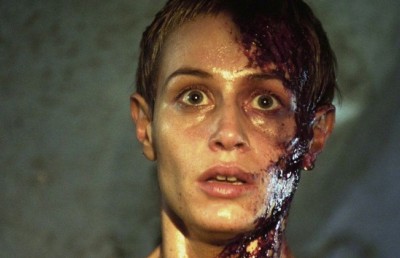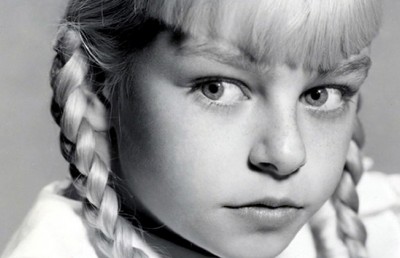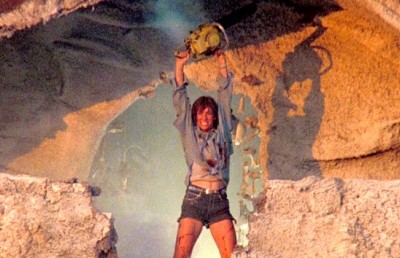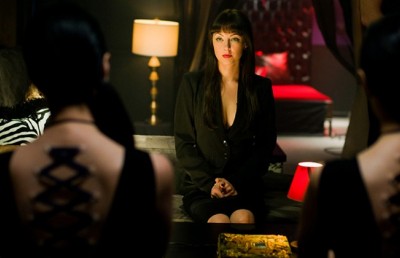The Final Girl Down Under
Ozploitation Variations on American Horror Archetypes
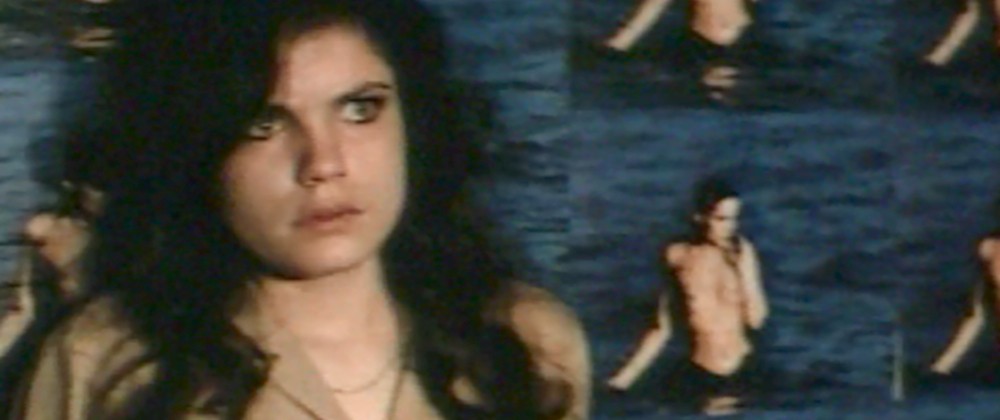
The Final Girls and avenging heroines of late 1970s and 1980s American horror cinema have been subject to considerable critical attention thanks to Carol J. Clover’s influential Men, Women and Chain Saws and related literature. However, little has been written about their Antipodean equivalents. This article discusses four “Ozploitation” thrillers from the same period — Patrick (Richard Franklin, 1978), Snapshot (Simon Wincer, 1979), Roadgames (Richard Franklin, 1981), and Fair Game (Mario Andreacchio, 1986) — examining how these films conform to and digress from the conventions identified by Clover in their American counterparts. Digressions arise from differences in cultural and cinematic contexts, while echoes of these conventions signify both conscious imitation of American models and the ubiquity of these narrative patterns. Moreover, they reflect the impact of second-wave feminism on Australian popular culture. This impact materializes in these Ozploitation thrillers, as it does in their Hollywood brethren, in both progressive and reactionary tides.
Final Girls and avenging heroines
Clover characterizes slasher films as modern-day folktales (10), and identifies several recurring tropes across texts. The killer is typically male, and usually marked by arrested development, abnormal sexuality, or gender confusion. Their weapons are usually phallic, “pretechnological” tools like knives, or occasionally mechanical tools like chain saws, which serve as “extensions of the body” (32). Their victims are usually teenagers, mostly female, and “sexual transgressors” (33); as Clover notes, “Killing those who seek or engage in unauthorised sex” is “a generic imperative” (34). These slayings usually transpire in a “terrible place” of some sort, such as a house, tunnel, or labyrinth. Finally, there is almost always a Final Girl, a female survivor who at film’s end “finds the strength either to stay the killer long enough to be rescued … or to kill him herself” (35). Keys to her survival are her “smartness, gravity, competence in mechanical and other practical matters, and sexual reluctance” (40), qualities which distinguish her from her friends. She is often depicted as tomboyish, masculine, and possessing a male or unisex name. In addition to enhancing spectator identification among the genre’s core teenage male audience, this gender ambiguity also aligns the Final Girl with the killer, for “Just as the killer is not fully masculine, she is not fully feminine” (40). This enables her to retaliate at film’s end and appropriate the killer’s phallic tools to inflict his “castration, literal or symbolic” (49). Halloween (John Carpenter, 1978) and Friday the 13th (Sean Cunningham, 1980) exemplify this formula. Another genre which Clover examines is the rape-revenge film, which provides a variation on slasher formula. Like slasher films, rape-revenge films promote “female self-sufficiency, both physical and mental” (143) and combine “the functions of suffering victim and avenging hero” in their protagonists (17).
In her analysis of slasher and rape-revenge films, Clover links the gender confusion of male killers, their sexually active female victims, and the dynamic Final Girls who slay them to the emergence of second-wave feminism and its destabilization of entrenched gender norms. Indeed, she contends that “the self-saving Final Girl and the self-avenging rape victim may, for better or worse, be the main contribution to popular culture of the women’s movement” (162). This explains the simultaneously progressive and phallocentric gender politics of these genres, torn between productive and reactionary impulses.
Ozploitation
In the early 1970s, Australian cinema resurfaced following a prolonged slumber. This coincided with a broader cultural renaissance, which Phillip Adams likens to “the Berlin Wall coming down … From being one of the most repressive countries on earth, Australia became one of the most liberal. From banning esoteric novels, we suddenly had full frontal nudity in television soapies” (67). The first offerings of this revived cinema were sex-centric comedies and documentaries which reflected this relaxed censorship, though the films which would characterize the Australian “New Wave” (Stratton) were more refined period fare such as Picnic at Hanging Rock (Peter Weir, 1975) and My Brilliant Career (Gillian Armstrong, 1979).
Simultaneous with these prestigious productions was a cycle of “Ozploitation” films, a label popularized by the documentary Not Quite Hollywood (Mark Hartley, 2008). These films included the sex documentaries and comedies mentioned above, as well as action films and horror thrillers. There was thus a marked divide in Australian cinema between “culturally specific films, dealing in recognizable Australian realisms” and “internationalized films, geared to a culturally undifferentiated market” (Cunningham 235). Thrillers drawing upon international — especially American — genre conventions belonged to the latter category. These films riffed on their overseas equivalents with an eye firmly on the international market and routinely recruited second-tier overseas names to headline, including Robert Powell, David Hemmings, Jenny Agutter, Steve Railsback, and Olivia Hussey. While these films were Australian-made, they were not made for Australian audiences. As David Stratton observed, “domestic audiences are really not too interested in seeing genre films — especially horror films — unless they’re American or British” (254).
Given the international orientation of Ozploitation and revival of interest in this genre thanks to Hartley’s documentary, it is surprising that Ozploitation thrillers have not yet been analyzed using Clover’s theory. This is a valuable exercise, illuminating how the archetypal patterns Clover elucidates in her American slasher texts materialize in their Australian imitators and how cultural differences impact upon these archetypes. Moreover, Annette Blonski and Freda Freiberg note that “Second-wave feminism began in Australia at roughly the same time as government decided to support a film-production industry” (191), hence the rise of a national cinema and second-wave feminism were simultaneous. Consequently, it is illuminating to consider how these texts reflect these shifting gender politics.
Patrick
Kathy Jacquard (Susan Penhaligon), a nurse recently separated from her husband, is employed at a hospital run by Doctor Roget (Robert Helpmann). Her main patient is Patrick (Robert Thompson), who has been comatose for several years after violently murdering his mother and her lover. Patrick has developed telekinetic powers, and uses them to communicate with and torment Kathy.
Director Richard Franklin was an aficionado and disciple of Alfred Hitchcock. He observed the master director during the making of Topaz (Alfred Hitchcock, 1969) (Franklin 123) and later directed Psycho II (Richard Franklin, 1983). Hitchcock’s influence is evident in Patrick ’s staging, tone, and plot: most notably, the titular character’s act of matricide mirrors that of Norman Bates in Psycho (Alfred Hitchcock, 1960). However, Hitchcock was not Franklin’s sole source of inspiration: Brian McFarlane situates Patrick in the same genealogy as classic noir (66) and RKO horror (67), while Stratton suggests the film is “heavily influenced” by another Hitchcock disciple, Brian De Palma, especially Carrie (Brian De Palma, 1976) (252), which also deals with telekinesis.
Patrick was released in Australia in October 1978, the same month Halloween , directed by Franklin’s U.S.C. classmate John Carpenter, debuted in the U.S. The film thus preceded the crystallization of slasher formula that accompanied Carpenter’s film. However, Clover contends that Psycho provided the groundwork for the slasher film (23–24). Consequently, in drawing upon the same starting point as the slasher film (not to mention its upmarket variants in the films of De Palma), Patrick shares a number of similarities with slasher formula. Patrick’s act of matricide, motivated by abhorrence of his mother’s sexual activity, opens the film, hence from the outset he is defined by arrested development. Moreover, where De Palma’s Carrie features a rounded lead protagonist in possession of telekinetic powers, Patrick is more akin to the silent killing machines of Halloween and Friday the 13th . Also consistent with the slasher tradition is the “terrible place” where the action unfolds: Roget’s hospital is an old mansion characterized by the “Victorian decrepitude” found in many slasher films (Clover 30).
Kathy is Patrick ’s Final Girl, and there are clear correspondences with standard formula — she is even nicknamed the masculine-sounding “Jacko” — as well as digressions. Where most Final Girls are teenagers, Kathy is a young woman with a qualification and career, recently separated and living independently from her husband. There are several reasons for this. First, in crafting an upmarket “adult” thriller in the Hitchcock mould, an adult protagonist was required. Second, while the teen film was a commercial force in American cinema which the slasher film neatly hybridized with, such films were and remain scarce in Australia. Finally, a number of the prestige period films of the New Wave centred on women struggling for autonomy in patriarchal environments, including My Brilliant Career , Caddie (Donald Crombie, 1976), and We of the Never Never (Igor Auzins, 1982). Patrick could thus be read as a contemporary-set, genre-based offshoot of this popular motif.
The ties between this cinematic motif and feminism are evident when Kathy tells her husband Ed (Rod Mullinar) how stifling their marriage is, stating “you should try being boxed in 24 hours a day with nothing but walls to stare at.” By moving into her own home and securing employment, Kathy is depicted, at least superficially, as autonomous and independent. In addition, like the Final Girls of American slashers she is depicted as sexually reluctant: Ed accuses her of frigidity, and when invited to a party she says “the last thing I need is [to meet] someone with a case of galloping gonads.” This sexual conservatism is at odds with the film’s lecherous male characters. Ed breaks into her apartment, then drunkenly mounts and attempts to have sex with her; when rejected, he jokes about “women’s rape fantasies” being overhyped. Another suitor, Brian (Bruce Barry), is an alpha male who attempts to lure Kathy into his swimming pool while inebriated.
While Kathy is sexually conservative, it is the newly liberated Australia of the 1970s, so the Final Girl sleeps with Brian while reconciling with Ed. This triggers Patrick’s jealousy towards Kathy’s suitors — he uses telekinesis to burn Ed’s hands and trap him in an elevator, and tries to drown Brian — and abhorrence of her sexual activity. Like the sexually active teenagers of countless American slasher films, she is, in Patrick’s puritanical view, deserving of punishment for her transgressions, just as his mother was. He trashes her house, calls her a “slut” (through controlling a typewriter), and repeatedly spits on her (this is characterized as a reflex motion, but could also be read as a sign of contempt for the predominantly female hospital staff). Moreover, she is not the first nurse he has tormented.
In the Final Girl tradition, only Kathy realizes something is amiss. With Ed and Doctor Roget indisposed, she must confront Patrick at film’s end. She calls him a “self-centred, self-important, self-indulgent little boy who never grew up, who wants his mummy,” making the implicit conventions of the slasher formula extremely explicit. She persuades Patrick to free Ed, but she is also lulled into a trance and is on the verge of poisoning herself until the released Ed prevents her. Thus while Kathy saves Ed, he also saves her, undermining the film’s earnest but admittedly under-developed feminist agenda. Franklin himself readily admitted that the ending does not entirely work, noting “Exactly why Kathy would want to kill herself I’m not sure, but it all seemed to make sense with this many things going on” (Franklin, commentary).
While Patrick ’s resolution is driven by plot convenience rather than logic, the film nonetheless represents an earnest attempt to address topical local gender politics while utilizing imported genre conventions. In its appropriation of Hitchcock, Patrick deploys and foreshadows some of the conventions which would characterize the soon-to-flourish slasher film, and in its engagement with Hollywood genre tropes it foreshadows a number of the internationally-minded Ozploitation thrillers that followed.
Snapshot
While Patrick ’s October 1978 Australian release coincided with Halloween ’s U.S. release, Simon Wincer’s Snapshot debuted in Australia in June 1979, on the same date as Halloween ’s Australian debut. It was thus one of the first post- Halloween Ozploitation thrillers, yet debuted for local audiences simultaneously. In a mercenary twist, distributors later retitled the film The Day after Halloween for its U.S. release. Yet the film contains more stalking than slashing and digresses from the slasher mould by featuring only one victimized character — Final Girl Angela (Sigrid Thornton) — but several antagonists.
Angela is a young hairdresser estranged from her ex-boyfriend Darryl (Vincent Gil), who stalks her in an ice cream van. Her best friend Madeline (Chantal Contouri), a model, introduces her to eccentric photographer Linsey (Hugh Keays-Byrne), who takes semi-nude pictures of her for a cologne advertisement. These pictures attract the unwanted attention of several admirers, including sleazy producer Elmer (Robert Bruning).
At nineteen, Angela is the youngest of the Final Girls discussed here. She is a distinctly downtrodden protagonist: on arriving late for work her boss complains that she “look[s] like the dog’s dinner”; she laments that she is flat-chested and unattractive; and her mother and sister treat her harshly. Angela is also sexually conservative: Darryl accuses her of frigidity and Madeline laments that she is “Nearly 20 years old, [with] only two quickies under your belt.” Moreover, just as the tomboyish Final Girls of American slashers are contrasted with their more feminine friends, Angela is contrasted with Madeline, who is mature and elegant. Madeline is also gay, and Darryl presses Angela about their friendship, asking if she is “Turning queer or something?” Angela is not — indeed, she does not realise her friend is gay, which is indicative of her sheltered upbringing and naiveté — yet this sentiment represents a crude attempt by the filmmakers to depict their Final Girl, in the slasher vernacular, as not entirely feminine in the conventional sense.
The photographic objectification of Angela’s semi-nude body is consistent with the voyeuristic impulses of the slasher film, but also the relaxed censorship and increasingly liberal attitudes towards onscreen nudity in Australian cinema. Scott Murray observes that “In the much more innocent Australian cinema of the early 1970s, bodies, male and female, were seen as objects of delight” (76). The multiplicity of sex-centric documentaries and comedies made in Australia in the 1970s testifies to this, and Angela’s posing for these photographs taps into this spirit of sexual liberation and provides the pivot in her character arc from downtrodden hairdresser to confident young woman.
However, in the slasher tradition Angela is punished for her emerging sexuality. As previously indicated, she is the only character victimized in the film, thus inhabiting the dual roles of sexually alluring victim deserving of punishment and sexually conservative Final Girl who evades it. Although she does not engage in sexual activity, she is condemned by her mother for the photographs and for moving into a share house inhabited by transient artists and hippies. Yet while Angela’s bohemian living is shocking to her mother, she remains too conservative for her bohemian friends. She is thus too provocative for her conservative family, and too boring for her new social circle.
As mentioned earlier, Snapshot features several antagonists. Angela’s ex-boyfriend Darryl ultimately proves a red herring, though he shares characteristics with the typical slasher killer. In addition to stalking Angela, like Patrick ’s comatose antagonist he is puritanical — Madeline warns Angela “He’d blow your brains out if knew what you were up to” — and possessive, insisting “You’re my girl Angie.” Moreover, while he accuses Angela of frigidity, it is implied he is sexually inept and strangely attached to her mother: she describes their typical dates as home-cooked meals where he “buff[ed] mum up for five hours.”
Sleazy producer Elmer poses the gravest threat to Angela. He invites her to his home and tries coercing her into posing for nude pictures, which she declines. Subsequently, she discovers a room at his office with hundreds of copies of her picture on the walls, floor and ceiling. Elmer confronts her and forces her to strip for the camera, but an altercation ensues and he is set alight in the tussle. The fact Elmer does not physically molest her but forces her to strip for camera indicates he is built from sexually dysfunctional slasher stock. Indeed, Madeline suggests after hearing about their initial encounter that “If you’d made the slightest sexual advance towards Elmer he would’ve run for his life.” Hence like the traditional slasher antagonist Elmer cannot perform sexually, and it is into voyeurism that he channels his desires.
In one last plot twist, Madeline is revealed to be the film’s final antagonist. As mentioned earlier, Madeline is gay, which Angela never comprehends despite numerous blatant and stereotypical signs. In the film’s finale she runs over Darryl with his own ice cream van: while she technically “saves” Angela from him, his lack of physical menace means she is really eliminating the threat of a stifling, conservative relationship for Angela, as well as a rival suitor for her affections. Madeline is thus retrospectively recast as a lesbian femme fatale , which both lampoons and circuitously endorses the opposition towards alternative lifestyles expressed by Darryl and Angela’s mother throughout.
Arguably, without its eccentric (and, like Patrick , not entirely logical) denouement or opening prologue that foreshadows it, there is little to characterize Snapshot as a thriller. Occasional scenes of sinister activity — a shattered car windscreen, a pig’s head left in Angela’s bed — remind us it is a thriller and it draws upon the slasher film vocabulary as well as other thrillers: Greg Kerr identifies Psycho, Play Misty for Me (Clint Eastwood, 1971), and Duel (Steven Spielberg, 1971) in Snapshot ’s DNA, and notes that “Its camera work and, to a lesser extent, sound effects are unashamedly redolent of Hitchcock’s suspense-building techniques” (47). Yet without its thriller bookends Snapshot could be viewed as a rather crude example of a 1970s Australian woman’s film, a contemporary, urban variation on those prestige period films about women struggling in patriarchal environments mentioned earlier. It probably would not satisfy in this guise, but nor does it completely satisfy as a thriller: Murray labels it a “middle-of-the-road” thriller (93), while Stratton finds it “deficient in the suspense department” (253).
While there is little meat on its bones, as a cultural artefact Snapshot holds a mirror to its contemporary moment. Moreover, as an Australian variation on slasher tropes and themes it taps into the universal grammar and reactionary impulses underpinning the genre, applying these to its single victim/Final Girl and disseminating several attributes of the traditional slasher killer among several featured antagonists: Elmer’s voyeurism and sexual perversion; Darryl’s sexual dysfunction and abnormal matriarchal attachment; and their obsession, plus Madeline’s, with Angela. Snapshot has little to say, but by virtue of its hybridity says a lot. As social drama or slasher thriller alone it is fundamentally lacking, yet as a social drama and slasher thriller it is a curious hybrid, signifying the overlap between society and slasher cinema and how the latter responds to the shifting tides of the former.
Roadgames
Richard Franklin’s Roadgames centres on Quid (Stacey Keach), a truck driver journeying from Victoria to Western Australia. The evening before his trip he loses the last vacant room in a motel to a van driver (Grant Page) accompanied by a young female hitchhiker. On the road the next day he encounters the same driver, sans companion, and after hearing news reports of someone murdering hitchhikers begins to suspect this driver is responsible. A young hitchhiker Quid picks up (Jamie Lee Curtis) spurs him on in his hypothesizing.
While Patrick drew upon Hitchcock’s Psycho , Roadgames draws upon another Hitchcock classic, Rear Window (Alfred Hitchcock, 1954). And like Patrick , Roadgames is a Hollywood-inflected production, though it unfolds across a distinctly Australian setting: the semi-arid 680-mile long Nullarbor Plain. The casting of Keach and Curtis accentuates its Hollywood-ness, yet both carry interesting intertextual residue. Curtis was, at the time, the Final Girl du jour, having starred in Halloween , The Fog (John Carpenter, 1980), Prom Night (Paul Lynch, 1980), and Terror Train (Roger Spottiswoode, 1980). Given this intertextuality, most first-time viewers would likely assume her character to be of similar stock to her Final Girl roles. Indeed, the character possesses certain Final Girl characteristics: she is inquisitive, recognises that something is amiss, and is assigned the male-sounding nickname Hitch. However, she is also flirtatious and “looking for a little excitement”, which distinguishes her from more traditionally cautious, conservative Final Girls. In addition, she only appears in the film’s second act, is abducted by the van driver at the end of this act, and does not reappear until the finale when she is discovered bound in his vehicle. While this treatment of Hitch could be read as a twist on formula, setting up Curtis as Final Girl before subverting expectations, it was simply how the role was written ahead of casting. As Franklin concedes, the role is a “bit of a waste” of Curtis’s talents (Franklin & Perry, commentary).
Where Curtis’s casting misleads viewers into assuming she will inhabit the Final Girl role, it is actually Keach who portrays a Final Girl-esque character. This gender revision is not unique to Roadgames — The Evil Dead (1981) casts Bruce Campbell in a traditional Final Girl role — but the extent to which Quid possesses the defining characteristics of the Final Girl is striking. According to Clover, she is the “only character to be developed in any psychological detail” (44). Where other characters in Roadgames are generic, Quid is literate, nebbish, eccentric, and refuses to conform to type, insisting “Just because I drive a truck does not make me a truck driver.” In addition, the Final Girl is “presented from the outset as the main character” (Clover 39): Quid is likewise established as lead character — and known to the killer — from the outset. The Final Girl is also “intelligent, watchful, level-headed; the first character to sense something amiss and the only one to deduce … the pattern and extent of the threat” (Clover 44): Quid likewise possesses knowledge nobody else does, as well as the intelligence to investigate.
Like the Final Girl, Quid is depicted as sexually inactive and aligned with the antagonist in this regard. Roadgames opens with Quid watching the driver check into the last available motel room with an attractive hitchhiker, noting that he himself passed her on the road earlier. He muses “First he gets my girl, then he steals my bed,” lamenting his lack of sexual conquest. Unbeknownst to him, the driver is likewise sexually inactive: instead of intercourse, he strangles the hitchhiker. From the outset, then, Quid and the driver are aligned: both are drawn to the same hitchhiker, albeit driven by different impulses, and both are sexually inactive, the former due to circumstance, the latter translating his urges into murder, punishing his victims for their desire.
Furthermore, just as the Final Girl is not completely feminine, so too is Quid not entirely masculine. While he laments his failed conquest, it is feasible that he, like the killer, would not have had sex with the hitchhiker. Early in the film he observes a motorist with a car full of sports balls and jokes “Now there’s a man with balls.” The joke is at the motorist’s expense, but suggests that Quid, in contrast, lacks balls. Later, when he picks up Hitch he evades her flirtations, and she accuses him of evasively talking in poems and platitudes. Finally, like James Stewart in Rear Window he is incapacitated — vehicle-bound — for much of the film, representing an emasculation of sorts: he is, by trade, observer and commentator rather than participant. Ultimately, Quid is James Stewart in Rear Window crossed with a Jamie Lee Curtis-esque Final Girl, with Curtis inhabiting the Grace Kelly role.
The finale for Roadgames mirrors Rear Window , with the killer invading the protagonist’s domain. The driver leads Quid on a vehicular chase through the streets of Perth into its increasingly narrow back alleys. These alleys are akin to a labyrinth, consistent with the terrible places of many slasher films which “at first seem a safe haven” but become “the walls that hold the victim in” (Clover 31). Quid’s truck becomes wedged in a narrow alley and he cannot leave his vehicle, which the killer mounts. Through a fortuitous series of events Quid escapes and fights his enemy, Hitch is discovered, and the antagonist is arrested.
While I have interpreted Quid as a Final Girl-esque figure, Roadgames is far from a conventional slasher, given its road movie tropes, outback vistas, and comic leanings. Yet through the casting of Curtis and Franklin’s Hitchcockian vocabulary, as well as the aforementioned correspondences with slasher formula, Roadgames represents a peculiar offshoot of the slasher film and provides further evidence of Ozploitation’s continuing overlaps with and digressions from slasher formula.
Fair Game
According to Clover, “Actual rape is practically non-existent in the slasher film … violence and sex are not concomitants but alternatives” (29). However, they are concomitants in the rape-revenge film. These films typically perpetuate binary oppositions between city and country, civilization and the uncivilized, and women and men, and centre on women who venture into “place[s] where the rules of civilization do not obtain” and are confronted and raped by “the threatening rural Other” (124). This rape is usually a social ritual performed by several men, legitimized by group dynamics (123). Subsequently, the protagonist exacts brutal vengeance. The rape-revenge film echoes and digresses from the slasher film: the Final Girl becomes the “self-avenging rape victim” (162); sexually deficient killers become sexually transgressive rapists; symbolically sexualized violence becomes literal sexual violence; and contained terrible places become expanses of harsh countryside.
Mario Andreacchio’s Fair Game shares many characteristics with the rape-revenge film. The film’s tone, vocabulary, and aesthetic all echo this genre. However, rape is not depicted onscreen and it is ambiguous whether or not it occurs. Moreover, while the brutal storyline unfolds in the outback, the film tweaks the formula whereby the city is good and the country as bad.
The antagonists of the film are Sunny (Peter Ford), Ringo (David Sandford), and Sparks (Garry Who), who are illegally hunting kangaroos in a wildlife sanctuary. The protagonist is Jessica (Cassandra Delaney), who lives and works at the sanctuary and is currently alone. Jessica is independent, athletic, and intelligent, but is nonetheless vulnerable due to her isolation, which the antagonists exploit. Their crimes escalate over the film’s first half: they run her vehicle off the road, photograph her naked and asleep in her home, destroy her artwork, leave a dead and gutted kangaroo in her vehicle, harass her horse, and brazenly kill the sanctuary’s wildlife. These crimes culminate with a scene where Jessica is tied to the hood of their car and driven around the sanctuary semi-exposed.
This sequence ends with Jessica lapsing into unconsciousness, and in the next scene she awakens outside her house, wanders inside, and showers. Though bathing and cleansing frequently symbolize the aftermath of rape, it is unclear whether she has been raped or not. If, as viewers, we conclude she has not been raped, then the hunters’ various crimes against her may be read as a violent metamorphosis of sexual impulse in the slasher tradition. They may also be read as a disturbing variation on the Australian “larrikin” figure, an archetype prevalent in 1970s sex comedies like The Adventures of Barry McKenzie (Bruce Beresford, 1972) which received its widest mainstream exposure in Crocodile Dundee (Peter Faiman, 1986), but has also been invested with darker, unsavoury shades in films like Wake in Fright (Ted Kotcheff, 1971).
Regardless of whether or not Jessica is literally raped, the crimes against her are violations — of her property and personal agency — and tantamount to rape. Moreover, the cinematic vocabulary used to depict these violations is consistent with that of the rape-revenge film. Clover notes of this genre that “Every narrative and cinematic device is deployed to draw us into her perceptions — her pain and humiliation at the rape, her revenge calculations, her grim satisfaction when she annihilates her assailant” (152). Jessica’s retaliation follows the classic trajectory of the avenging victim, and she rises to the task of annihilating her antagonists: Ringo is electrocuted, Sparks is impaled, and Sunny dies in his blazing vehicle. With their stunt-work and pyrotechnics, these scenes are consistent with the action film aesthetic which, Clover observes, many rape-revenge films adopt for their resolutions (153). As is often the case with rape-revenge films, the question lingers as to whether the gratuitous annihilation of the rapists justifies the gratuitous depiction of rape and degradation preceding it (though, as indicated earlier, onscreen rape is not depicted here). While I would argue that Jessica’s retribution carries a tangible therapeutic charge, for Suzanne Browne “the predictable ending gives one no feeling of justice — the damage has already been done” (194).
As indicated earlier, Fair Game tweaks the rape-revenge film’s good-city/bad-country opposition. This opposition is resilient elsewhere in Australian cinema: Wake in Fright , Picnic at Hanging Rock , Razorback (Russell Mulcahy, 1984), Shame (Steve Jodrell, 1988), and Wolf Creek (Greg Mclean, 2005) are noteworthy examples. Yet while the outback hosts Fair Game ’s grisly events, Jessica is a country rather than city resident, and her sanctuary is a haven despoiled by intruders who do not belong. It is never specified from where this invading force originates, but the hunters’ attire (one wears punk clothes), souped-up vehicles, and arsenal of weapons feel distinctly urban.
Conclusion
Scott Hocking states that Australian film “allows local artists to explore universal themes, or appropriate the Hollywood template”, but that “these explorations are more often than not invested with an ethos that is uniquely our own” (24). The four Ozploitation thrillers discussed here testify to this merging of Hollywood formula with local concerns. Each taps into key tropes identified by Clover in the American slasher and rape-revenge genre: all four feature antagonists driven by sexual abhorrence or desire perverted into violence, albeit bearing more eclectic weapons ranging from telekinesis to cameras to motor vehicles; all feature victims characterized by their sexuality and/or vulnerability; all feature confrontations in terrible places, ranging from seedy offices and Gothic hospitals to wide open expanses; and all feature Final Girl figures or avenging heroines, though in Roadgames the male protagonist possesses those attributes. Hence the mythological grammar elucidated by Clover in American horror fare is apparent in these Australian films, with variations based upon cultural differences and priorities.
All four films, like most of their Hollywood equivalents, were directed by men, and the industry that spawned them was similarly male-driven (Alysen 302–303). Moreover, these Ozploitation thrillers, like their American brethren, provide both productive and counter-productive gender politics and responses to second-wave feminism. Whether their depictions of Final Girls and avenging heroines strike viewers as progressive or regressive ultimately resides in the gouged eye of the beholder, with each film providing sufficient fuel for opposing readings. Patrick ’s Kathy and Snapshot ’s Angela are independent young women forging new career paths and shedding suffocating relationships, and both films condemn boorish, patriarchal behaviour and puritanical thinking. Yet both give voice to conservative vantage points, with Snapshot in particular depicting, to varying degrees, alternative lifestyles, bohemia, feminism, and homosexuality in unflattering lights. And Roadgames , in the interests of its Rear Window -themed plot, focuses on a male protagonist and sidelines its female lead. Moreover, Kathy, Angela, and Roadgames ’s Hitch all require saving at film’s end, indicating that these films were slower on the uptake than their American slasher brethren. Fair Game ’s Jessica requires no intervention, but in the rape-revenge tradition must endure misogynistic Hell to justify the fireworks display of retribution at film’s end. These short descriptions make evident the fundamental bind of slasher and rape-revenge films, Australian or otherwise: they must indulge misogynistic and patriarchal impulses in order to combat them. Sometimes, the balance is precarious.
While Patrick , Snapshot , Roadgames , and Fair Game are not necessarily the most emblematic Ozploitation thrillers, they are amongst the most well-known and recognizable, especially in the aftermath of Not Quite Hollywood , which spotlights all four. Further analysis is warranted of other Australian horror films and thrillers of the era to gauge whether their gender politics are equally fraught with contradictions, though I suspect findings will be consistent with those illustrated above…
Bibliography
Adams, Phillip 1994, “A cultural revolution,” in Scott Murray (ed), Australian Cinema , Allen & Unwin, St Leonards, pp. 61–69.
Alysen, Barbara 1985, “Australian Women in Film,” in Albert Moran & Tom O’Regan (eds), An Australian Film Reader , Currency Press, Sydney, pp. 302–313.
Blonski, Annette & Freiberg, Freda 1989, “Double Trouble: Women’s Films,” in Albert Moran & Tom O’Regan (eds), The Australian Screen , Penguin, Ringwood, pp. 191–215.
Browne, Suzanne 1995, “Fair Game,” in Scott Murray (ed), Australian Film 1978–1994: A Survey of Theatrical Features , Oxford University Press, Melbourne, p. 194.
Clover, Carol J 1992, Men, Women and Chain Saws: Gender in the Modern Horror Film , Princeton University Press, Princeton.
Cunningham, Stuart 1985, “Hollywood Genres, Australian Movies,” in Albert Moran & Tom O’Regan (eds), An Australian Film Reader , Currency Press, Sydney, pp. 235–241.
Franklin, Richard 1999, “Pistols at dawn: the ‘art’ of film vs the ‘science’ of previewing,” in Raffaele Caputo & Geoff Burton (eds), Second take: Australian film-makers talk , Allen & Unwin, St Leonards, pp. 123–135.
—— (commentary) 2009, Patrick , DVD, Umbrella Entertainment.
—— & Martin, Perry (commentary) 2004, Roadgames , DVD, Umbrella Entertainment.
Hartley, Mark (dir) 2008, Not Quite Hollywood , DVD, Madman Films.
Hocking, Scott 2006, “Introduction,” in Scott Hocking (ed), 100 Greatest Films of Australian Cinema , Scribal Publishing, Richmond, pp. 23–24.
Kerr, Greg 1995, “Snapshot,” in Scott Murray (ed), Australian Film 1978–1994: A Survey of Theatrical Features , Oxford University Press, Melbourne, p. 47.
McFarlane, Brian 1980, “Horror and Suspense,” in Scott Murray (ed), The New Australian Cinema , Nelson, West Melbourne, pp. 61–77.
Murray, Scott 1994, “Australian cinema in the 1970s and 1980s,” in Scott Murray (ed), Australian Cinema , Allen & Unwin, St Leonards, pp. 71–146.
Stratton, David 1980, The Last New Wave: The Australian Film Revival , Angus & Robertson, London.
Filmography
Andreacchio, Mario (dir) 1986, Fair Game , VHS, Charter Entertainment.
Franklin, Richard (dir) 1978, Patrick , DVD, Umbrella Entertainment.
—— 1981, Roadgames , DVD, Umbrella Entertainment.
Wincer, Simon (dir) 1979, Snapshot , DVD, Umbrella Entertainment.



